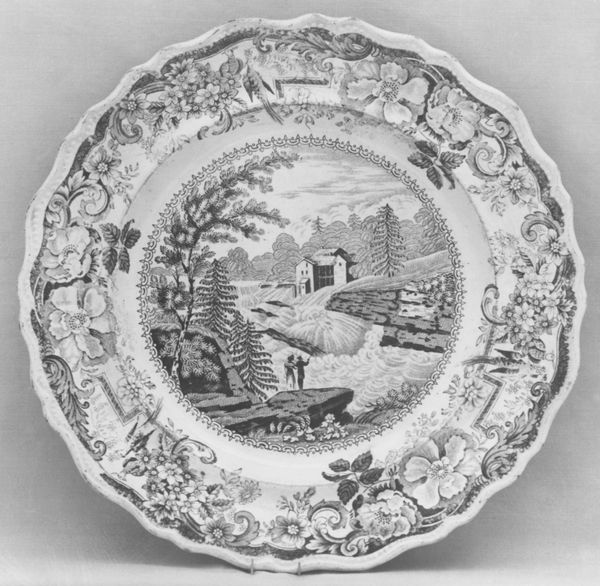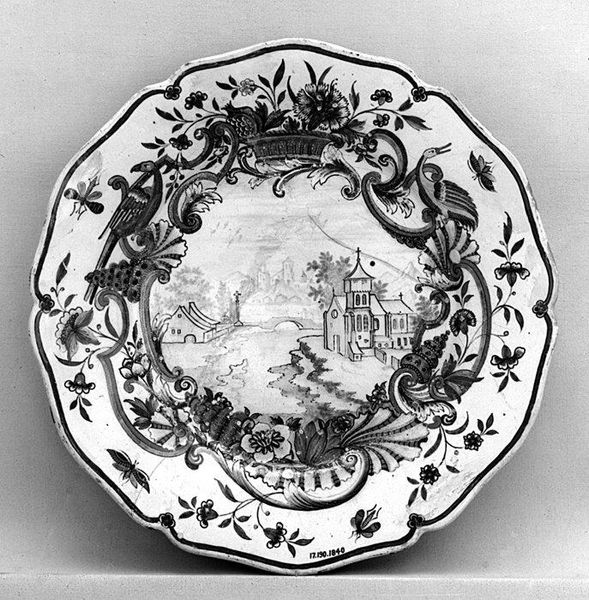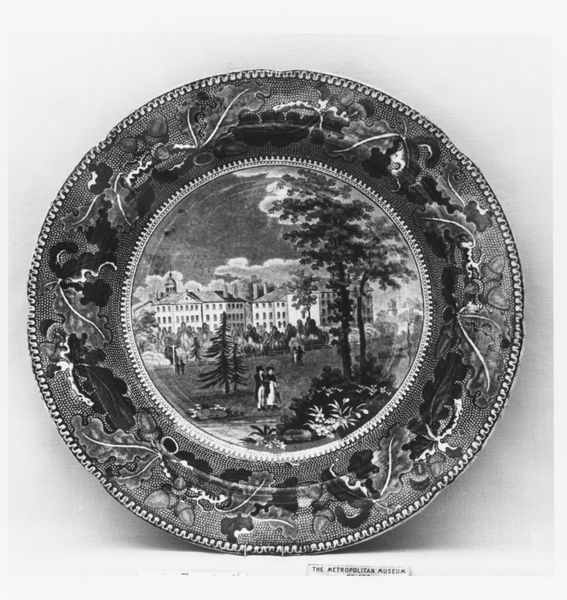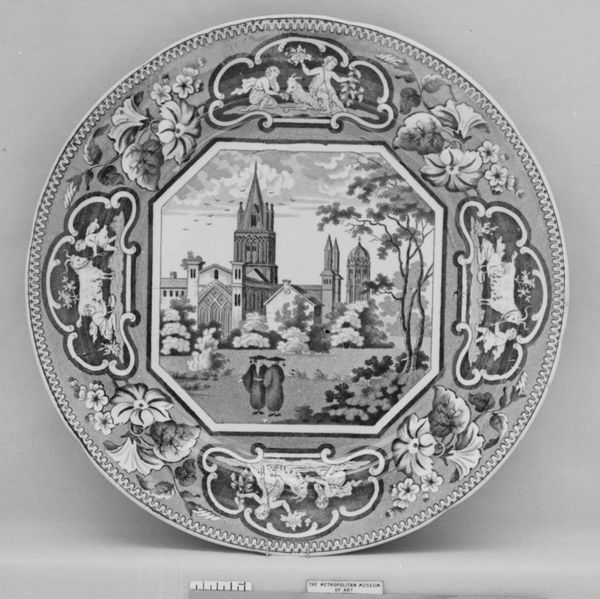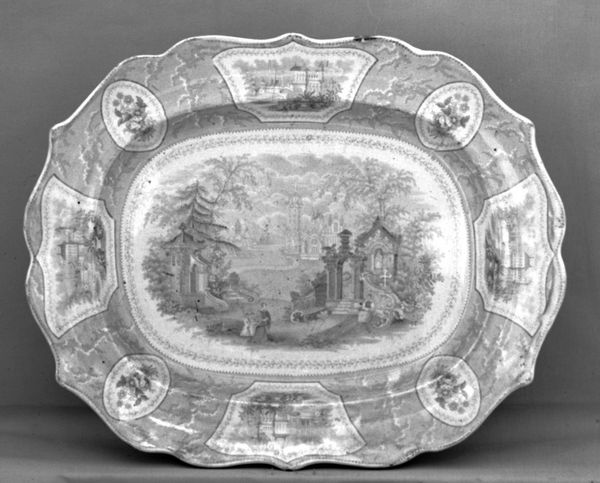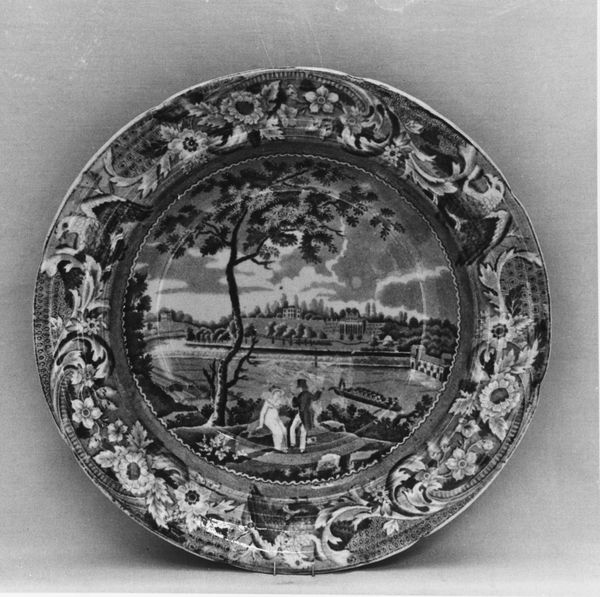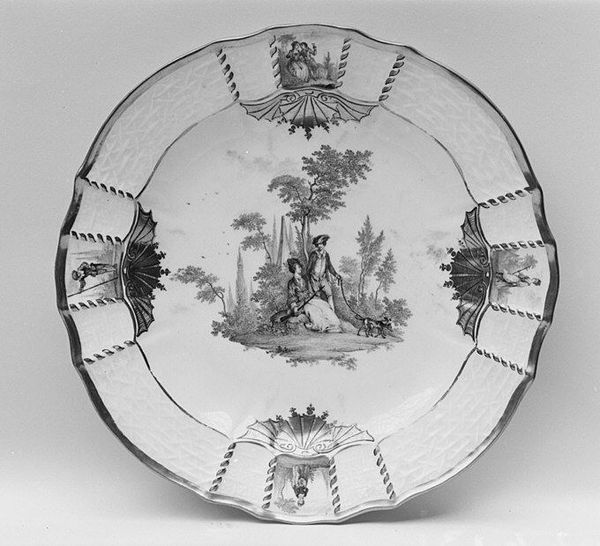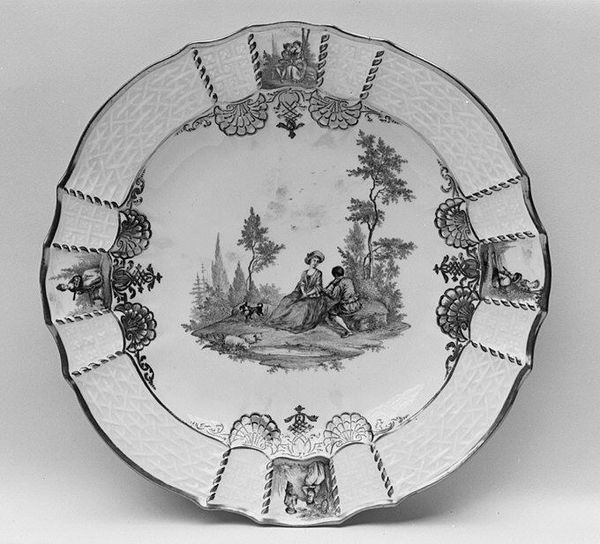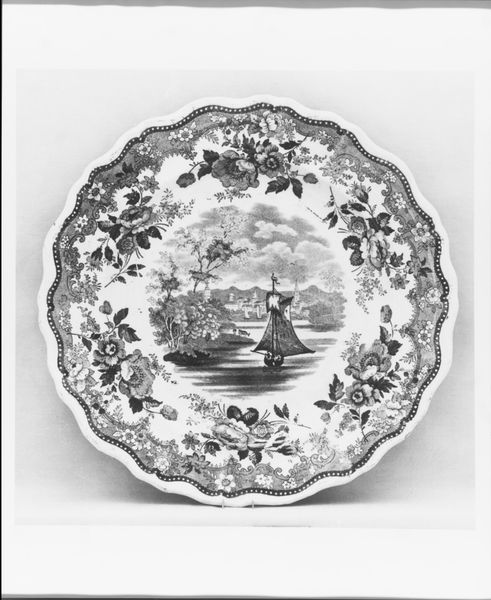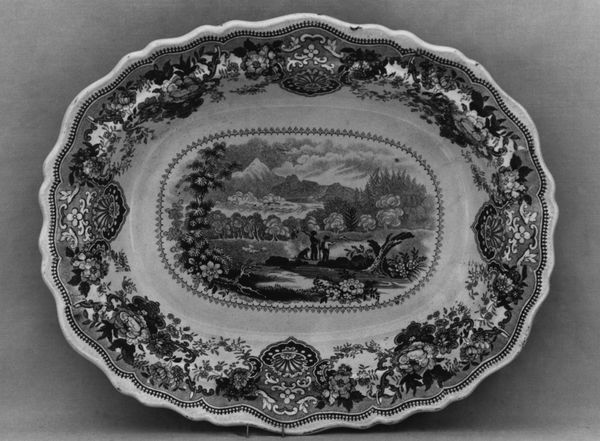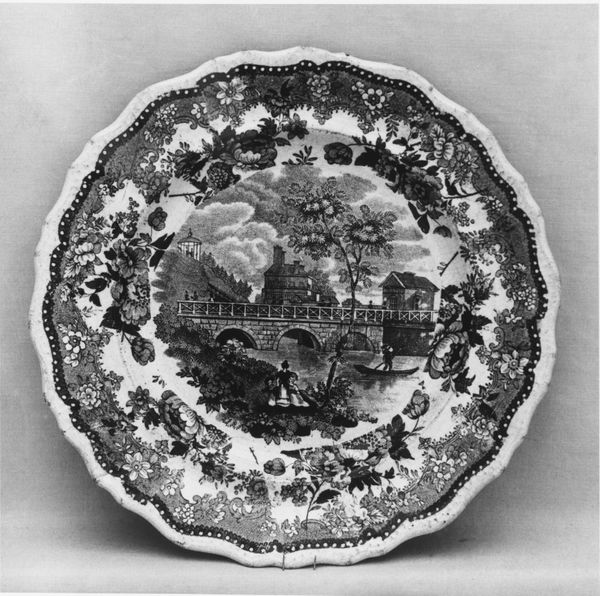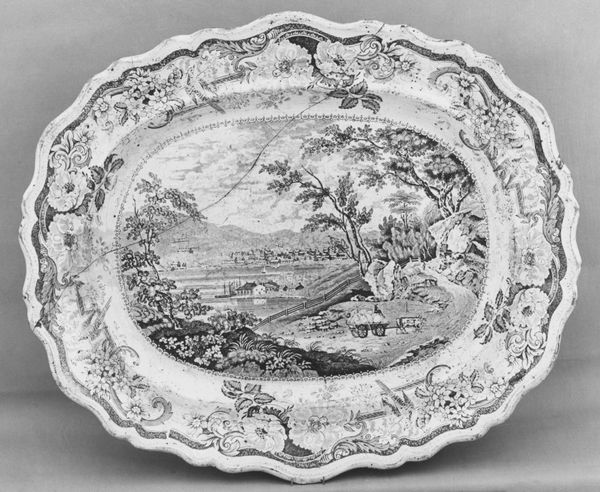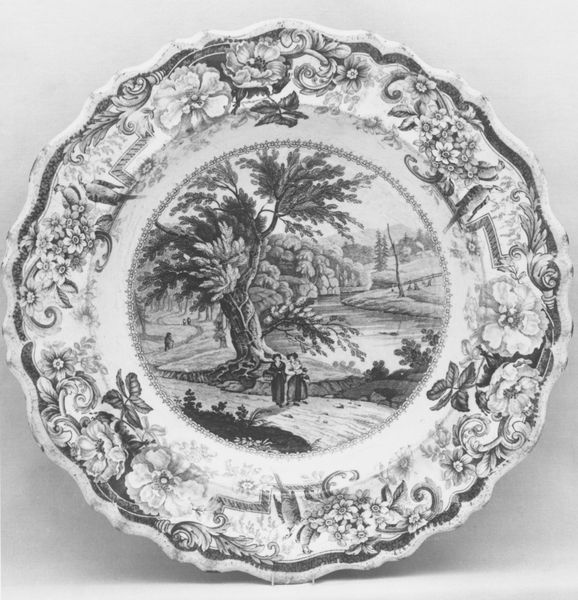
print, ceramic, sculpture
# print
#
sculpture
#
landscape
#
ceramic
#
figuration
#
sculpture
#
orientalism
#
genre-painting
#
decorative-art
Dimensions: Diameter: 9 3/8 in. (23.8 cm)
Copyright: Public Domain
Editor: This ceramic plate, dating back to the 19th century, is currently housed at the Met. The plate is a monochromatic, meticulously detailed tableau that, although ornamental, somehow feels weighty to me. The entire scene hints at somewhere exotic, and evokes historical trade routes. What cultural narratives or echoes do you find embedded in its design? Curator: That’s an insightful observation. Think about how decorative arts, especially those featuring stylized landscapes or genre scenes, often act as mnemonic devices. Notice how it isn’t simply a picturesque scene, but one steeped in Orientalist fantasies of the 19th century, when exoticism was very popular and sought after. The depiction of figures, architecture and landscape all evoke "the Orient," filtering other cultures through a Western lens. Editor: So, this is about how Europeans at the time *thought* about other cultures. Does the composition – the placement of the figures and the buildings – play into this as well? Curator: Absolutely. Observe the placement of the figures relative to the architecture and the landscape. The artist organizes them into scenes that reflect Western social hierarchies and power dynamics. It reinforces a certain imagined aesthetic of other regions, carefully arranged to appeal to a European sensibility, as though to codify it. Consider this through the lens of how images of these cultures were consumed and interpreted back then; these kinds of depictions weren’t merely aesthetic, but actively shaped European understandings and interactions with these "other" societies. Editor: That is a strong statement, indeed! So the plate not only reflects artistic skill but also carries socio-political information from its time. Curator: Precisely. And thinking about William Adams as the creator of this work, the artist plays into pre-conceived notions to make profit. Cultural symbols, like these, perpetuate different kinds of social narratives. By engaging with these pieces, we open doors to examine and understand history.
Comments
No comments
Be the first to comment and join the conversation on the ultimate creative platform.
